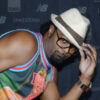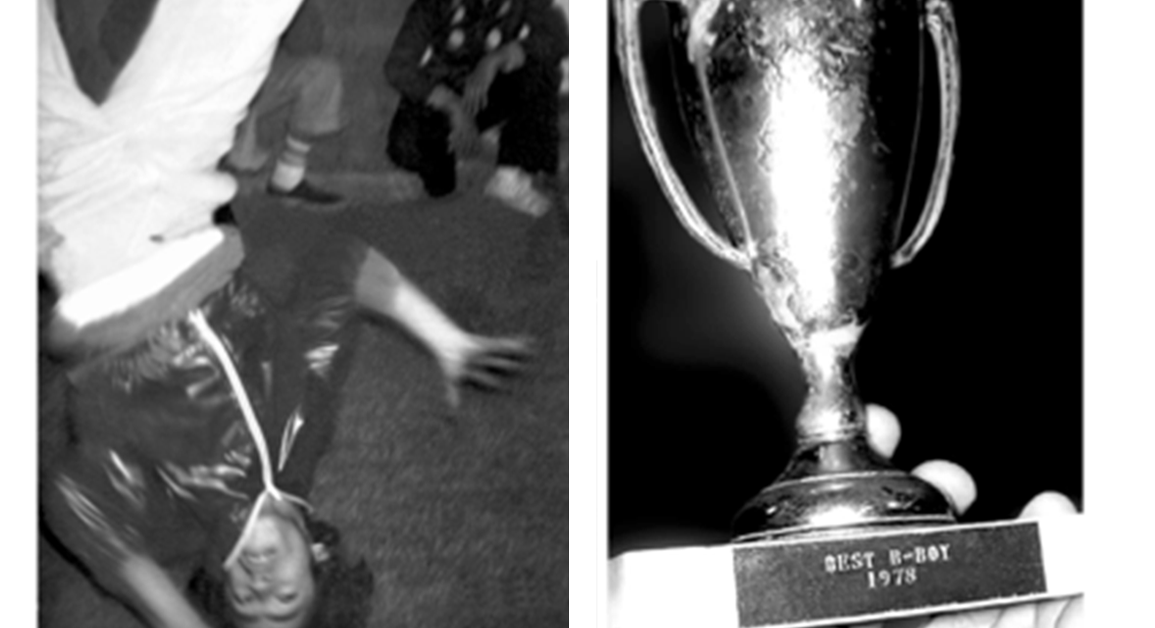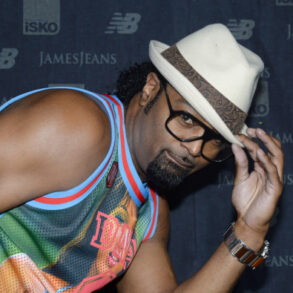
The Olympians competing in the inaugural breaking exhibition event at the Paris Games are sure to perform incredible feats of acrobatics while music plays. But you won’t catch them doing actual rhythmic dance outside of a few shuffle steps.
It’s a shame, but it’s also not a surprise. Within the alleged success of the breaking or breakdancing craze is a story of innovation hijacked by a cancerous commercialization—as the Bronx street dancers who were part of its creation and evolution know all too well.
Back in late 1974 or early ’75, teenagers from two Bronx neighborhood dance crews, the all-Puerto Rican Salsoul and the all-Black Zulu Kings, pioneered a freestyle form of dance that they called rocking. They began by performing a salsa-like style of dance to rock music, which they called “top rock.” When the right beat came on, they used a drop move to transition down to “floor rocking,” which involved innovative footwork while the dancer’s hands were on the ground. They finished in a “chair-freeze pose,” freezing their entire bodies in a shoulder stand with their legs crossed in the air.
These two dance crews inspired the next generation of rockers or B-boys—short for beat boy—the name these Bronx kids were starting to call themselves by 1976. New dancers would add their own innovations to the dance, such as a local Puerto Rican teen named Luis “Trac 2” Mateo. He used his tumbling background to incorporate gymnastics into the dance and invented a unique floor rocking move called tracks—spinning on his head in a circle while switching hand positions. Other dance originators and innovators in the Bronx included Lein “Spy” Figueroa, Santiago “Jojo” Torrez, Raul “Bos” Olavarria, Norberto “Blue Eyes” Morales, Jimmy Lee, and Jimmy Dee.
Rocking soon spread out among the boroughs, and by 1977, teens in Bushwick started doing their own variation of the dance they called “up-rock,” a move that involved a simple hop shuffle step that emulates fighting against another dancer.
The first rocking competition took place in 1978, during a local dance contest at St. Martin of Tours hall in the Bronx. Trac 2 made it to the final battle, only to under-rotate a back somersault. But then, after using his hands to break the fall, he kicked himself into a headspring. The crowd erupted. He won first place and still has the trophy, inscribed not for rocking but for “B-boying,” the earliest record of rocking being referred to that way.
Rocking or B-boying only lasted for a few more years. By 1982, it was considered played out in the Bronx, with other forms of street or urban dance like popping becoming popular.
That’s when Hollywood came around.
In 1983, the movie Flashdance found a few next-generation B-boys (along with a truly inept local New York popper) to perform. Their spinning moves captured the imagination of audiences around the world and in the process revived the dance. Kids started copying the spinning moves of floor rocking but dropped the actual dance element. California kids who did these tricks called them power moves, which included windmills, turtles, tracks, and backspins.
By the time I saw Fred Flintstone and Barney Rubble ‘breakdancing’ in a TV commercial in the early ’80s, it was clear that the American street dance of rocking/B-boying, created by Black and Puerto Rican teens a decade earlier in the Bronx, had been reduced to a corny fad.
The media, while reporting on these spinning moves, didn’t bother to do any research. Instead of referring to the dance as rocking or B-boying, they took the term “breaking” from my own dance group, Chain Reaction, based in Reseda, California. I had originally coined “breaking” in 1973 to describe the bent-arm freeze position of our style of locking, a dance form made up of multiple rhythmic body arm extensions and bent arm hesitations or freezes combined with knee drops, splits, and twists danced to the beat of funk music. By 1976, we used the word breaking to describe the act of dancing in general. So instead of saying, “Go dance against someone” you’d say, “Go break on ‘em.” The term eventually spread in the Los Angeles and New York dance scenes.
Soon, the media made breaking a generic umbrella word to refer to all street dance or urban dance forms, including locking, popping, boogaloo, and rocking/B-boying—each of which demand their own OG funk music, rhythm, and tempos. Their sloppy reporting would eventually blur all these together, homogenizing unique dances into one jumbled dance craze with no concern for their individual histories.
By the time I saw Fred Flintstone and Barney Rubble “breakdancing” in a TV commercial in the early ’80s, it was clear that the American street dance of rocking/B-boying, created by Black and Puerto Rican teens a decade earlier in the Bronx, had been reduced to a corny fad. Now every kid, it seemed, was walking around with a headband, wearing a nylon tracksuit, and carrying a piece of cardboard around to do back spins on.
Meanwhile, culture vultures predictably flooded in, both to take credit and profit from the commercialization of the dance mania, further erasing the true origins of locking, popping, boogaloo, and rocking/B-boying.
In 1993, I got tired of people telling me about a history that I had lived. So I began interviewing the street dancers who were there at the beginning, the ones who created and innovated everything the world now calls “hip-hop dance.” (Never mind the fact that this history predated hip-hop. As Trac 2 told me in an interview, “Hip-hop was not a scene in which I grew up in. I am not a hip-hop. I do not have any part of hip-hop. You cannot … expect me to label myself in a term that was being used in the ’80s.”)
The B-boys in the early Bronx scene I interviewed told me that they never intended the style to be about all acrobatic or gymnastic ability; the magical part was the rhythmic dance, which they reflected even in their ground moves.
That’s why in 1998, when I produced the first Underground Dance Masters tournament, the rocking/B-boying category had a 16-beat dance requirement, which meant each competitor had to rhythmically dance to the correct number of beats or else they’d lose points.
I have worked diligently for over 20 years to bring attention to these unique American dance forms along with the creators and innovators by verifying facts and exposing fiction. Still, with rocking or B-boying, even the World DanceSport Federation, the international governing body of competitive dance, chose to absorb a fragmented remnant of the dance dominated by big tricks or power moves that can easily be seen and learned through videos online.
Judging in DanceSport’s standardized version of breakdancing appears to be purely subjective and not based on any form exactitudes like gymnastics. That’s why the Bronx dancers see it as a watered-down and one-dimensional version of rocking/B-boying.
In 2018, DanceSport’s version was included for the first time in the Summer Youth Olympic Games in Buenos Aires, Argentina. It debuted to big fanfare, which created a path for it to come to the Olympic Games this year.
When competition starts in Paris, the only pseudo-dancing that will happen will be on the memory and history of this American street dance form, not to mention the contributions of the original street dancers, who remain unheralded for their creations and innovations that changed pop culture.
This post was originally published on this site be sure to check out more of their content.





